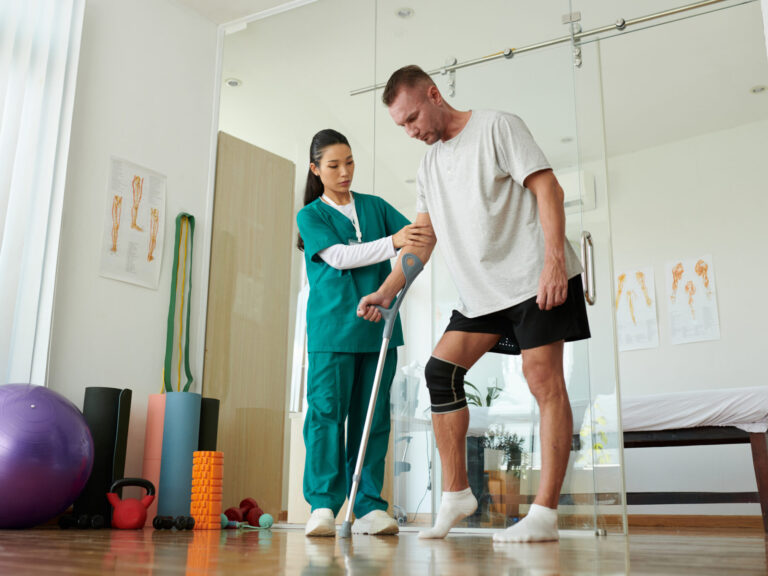
Better Recovery through Neuroscience
An understanding of basic neuroplasticity could help make our worker’s compensation claims systems less harmful and more sustainable. Rob Aurbach outlines his award-winning research paper.
Workers’ Compensation has been premised on a social bargain between workers and employers. Workers get a no-fault recovery scheme with benefits designed to provide assistance during the healing period so that they can return to work. Employers get limitations on their risk exposure that make it insurable at a reasonable cost, and get their trained and experienced workers back to work. That’s what’s supposed to happen. We have spent significant effort at cost control and reductions, sometimes with good results when measured solely by premium cost. But our efforts have not provided the benefit of the bargain to many workers or their employers.
Return to work rates have been essentially flat across Australia for almost two decades, despite falling physical injury rates. Some jurisdictions that have achieved a high degree of control over their premium costs have also experienced disability durations that are significantly higher than the Australian mean. There is growing evidence that secondary psychological harm, experienced as a result of going through the compensation system, is causing sufficient increases in duration and complexity to be a candidate for our largest cost driver. It seems beyond reasonable dispute that advice that focuses solely on the economic performance of injury recovery schemes is insufficient to fulfil the social bargain for either injured workers or employers.
“Just as we learn to play sport, or music through practice, we learn to connect the experiences of being in an injury recovery system in a way that may associate negativity, pain and a profound sense of loss of personal control with normal claims handling experiences.”
Hospital administrators have known for years that the medical environment is capable of causing exacerbation of illness or sequelae to the original complaint. Hospitals have shaped their operational protocols to limit and control these harmful outcomes. Similarly, compensation schemes have the ability to exacerbate original injuries or facilitate secondary illness or injury that greatly extends the duration of disability and accounts for a significant percentage of long tail, high cost claims. Understanding and preventing system created harm in compensation schemes makes both economic and social sense.
“Better Recovery Through Neuroscience” offers an explanation of the process by which people with claims in compensation systems may become further injured. The paper looked at the process by which we learn all of our complex behaviours, including basic skills, habits and even our beliefs. It then applies this understanding of basic human neuroplasticity to the compensation environment.
 In any given instant, all of our thoughts, sensations and emotions are processed together in the brain. This process is necessary to allow us to selectively focus attention. Most of the time those connections between those thoughts, emotions and sensations are recycled by the brain. But if those groupings are repeated sufficiently, the connections between brain cells physically change, becoming more durable, faster, more automatic and less subject to conscious control. The association becomes “habitual”. Just as we learn to play sport, or music through practice, we learn to connect the experiences of being in an injury recovery system in a way that may associate negativity, pain and a profound sense of loss of personal control with normal claims handling experiences. The injured worker who hears from a doctor or lawyer that “you’ll never work again” may come to associate this message with other things in the claims environment, such as economic pressures, tensions at home and the anxiety pain and sense of loss of control that commonly accompany injury. If this kind of pattern of associations is repeated sufficiently, it becomes habitual, resulting in chronic pain, loss of the injured person’s identity as a worker and constant stimulation of the sense of loss of control
In any given instant, all of our thoughts, sensations and emotions are processed together in the brain. This process is necessary to allow us to selectively focus attention. Most of the time those connections between those thoughts, emotions and sensations are recycled by the brain. But if those groupings are repeated sufficiently, the connections between brain cells physically change, becoming more durable, faster, more automatic and less subject to conscious control. The association becomes “habitual”. Just as we learn to play sport, or music through practice, we learn to connect the experiences of being in an injury recovery system in a way that may associate negativity, pain and a profound sense of loss of personal control with normal claims handling experiences. The injured worker who hears from a doctor or lawyer that “you’ll never work again” may come to associate this message with other things in the claims environment, such as economic pressures, tensions at home and the anxiety pain and sense of loss of control that commonly accompany injury. If this kind of pattern of associations is repeated sufficiently, it becomes habitual, resulting in chronic pain, loss of the injured person’s identity as a worker and constant stimulation of the sense of loss of control
The range of human reactions to an overwhelming loss of a sense of personal control include disengagement, secondary psychological injury and adaption of a new view of self that makes more sense of the experiences – which often leads to the adoption of the persona of a disabled person. These are the claims that could have gotten better, but instead have become long duration and high cost systemic failures.
This understanding of basic neuroplasticity allows us to re-examine our claims systems with an eye to making them less harmful and more sustainable. We can recommend modification of the behaviour of claims staff, changing the experience of being in the system to reduce the unnecessary repetition of negative messages and preventing them from becoming entrenched. We can recommend claims management systems that allow more choice preserving the vital sense of personal control of the recovering person. We can create systems, such as medical certificates that focus on capacity, rather than incapacity; that guide stakeholder activities in ways that are not causing additional harm.
“The problem is that none of the research has given us enough understanding of what is happening to create resilience training that is useful across a range of personality types.”
There is a flip side to system-created harm. Two people with similar injuries can go through the same compensation system under similar circumstances and have widely varying outcomes. What makes these people different? We know that some people “bounce back” from adversity better than others. We have named this trait “resilience” and we have studied some of the characteristics that are present in resilient people. The problem is that none of the research has given us enough understanding of what is happening to create resilience training that is useful across a range of personality types. Different techniques work for some, while no technique works seems acceptable to all.
The neuroplastic approach to understanding disability discussed in “Better Recovery through Neuroscience” also reveals the working mechanism underlying resilience. Much of the repetition necessary to create secondary harm takes place through the mechanism of self-talk. The injured person may repeat the “you’ll never work again” message to a partner, some friends and the claims manager, but the bulk of the repetition occurs when he or she is ruminating on the situation and inability to take control over it. With sufficient repetition, the message becomes our belief and expectation. The person that ought to be actively recovering instead sinks into a passive victim’s role waiting for others to fix him or her.
 The way that we talk to ourselves also colours the messages we perceive and acts as a perceptual “filter” impacting what messages we take from the environment. The ability to quiet, change or modulate self-talk about negative messages is the ability to prevent the repetition that makes it habitual. What we call the ability to “bounce back” is really the ability to keep bad messages from the environment from becoming repeated enough to become a problem. Control the self-talk and both workplace upsets and the experience of compensation systems is much more tolerable.
The way that we talk to ourselves also colours the messages we perceive and acts as a perceptual “filter” impacting what messages we take from the environment. The ability to quiet, change or modulate self-talk about negative messages is the ability to prevent the repetition that makes it habitual. What we call the ability to “bounce back” is really the ability to keep bad messages from the environment from becoming repeated enough to become a problem. Control the self-talk and both workplace upsets and the experience of compensation systems is much more tolerable.
The push-back we see with various resilience strategies comes from the fact that there are many different strategies for controlling self-talk. People use their beliefs, their ability to reframe, their ability to busy the mind with other things and the ability to distance the mind from unpleasantness to accomplish the same overall goal. Different people feel more comfortable with different strategies, and uncomfortable approaches are generally not “practiced” enough to become habitual and automatic. Fortunately, it’s relatively easy to test people for their preferred resilience skills and offer training in a skill set that “fits” the individual. This understanding of resilience and its role in compensation schemes is discussed in the companion article to “Better Recovery”, called “Recalibrating Resilience”.
Neuroscience has given us the tools to understand how to make our compensation systems work better for both the person in recovery and for premium payers. By facilitating the implementation of better practices to address the problems of unnecessary disability and secondary psychological overlay, we can improve lives as well as the bottom line.
CPD: Actuaries Institute Members can claim two CPD points for every hour of reading articles on Actuaries Digital.






